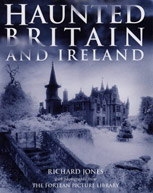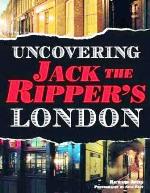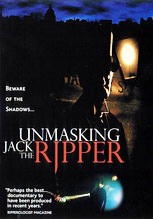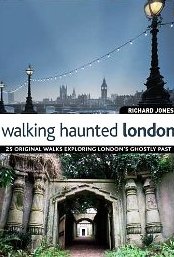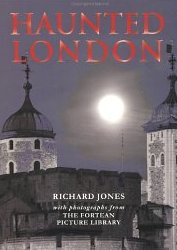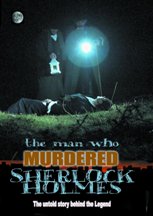GHOSTS OF HEREFORD AND WORCESTER
Harvington Hall, Harvington, Worcestershire
Film Footage Of Harvington Hall In The Snow
January 2010
At all times of the year Harvington Hall is an impressive and lovely old property.
Silhouetted against stormy winter sky, its Elizabethan walls of rustic red brick crowned by tall chimneys and punctured by a profusion of dark windows, stand steadfast against the worst that nature can hurl at them.
Approached on a bright summer’s morning, with the sunlight glinting off the rippling water of the reedy moat that surrounds them, those same walls take on an almost nonchalant air as they bask amidst the lush countryside that surrounds them.
Once inside the house, you find yourself blinking in disbelief at an interior that is imbued with the spirit of times gone by with many of the rooms he still possessing their original Elizabethan wall paintings and inside which you will find the finest collection of priest holes of any house in the country.
Harvington hall itself isn’t haunted, or, at least, no-one is admitting it if it is!
However, what cannot be denied is that Harvington Hall is most certainly imbued with the energies of several of those who have crossed its historic threshold, and it would be little surprise if some vestiges of the many emotions to which the walls have borne witness had not been left behind imprinted on their fabric.
It is, however, the grounds that surround Harvington Hall that are reputed to be haunted.
The ghost in question is that of Mistress Hicks who, in the early 18th century, found herself accused of causing rain to ruin the harvests of her enemies and, just for good measure, of causing them to vomit urine.
Mistres Hicks was duly hangedat a crossroads close to Harvington Hall for these transgressions , the idea being that the cross which was formed by the intersection of the two roads would prevent her ghost from returning to plague the neighbourhood. However, the spirit of Mistress Hicks was not to be contained so easily and her ghosts is said to roam the grounds of Harvington Hall.
Arthur’s Stone, Nr. Dornstone, Herefordshire
According to legend, Arthur's Stone marks the spot where King Arthur once fought one of his many battles.
There is a tradition that Arthur fought with a King or a giant here, and having broken his adversary’s back, he buried him at this site marking his resting place with the stones.
Some claim that the cup marks that can be seen on the stones are the indentations left by the giants elbows as he hit the ground. Others maintain that they are the dents left by Arthur’s knees as he knelt in prayer to give thanks for his victory.
In reality this sullen group of stones are the remains of a Neolithic tomb that that dates from around 3,700 - 2,700 BC.
Its mighty 25-ton capstone is supported by nine uprights that give the distinct impression that they are finding it something of a struggle to support their heavy load.
A tomb such as this was used as a communal burial vault and would no doubt have housed the dead of several generations.
Although the mound that once covered the tomb has now been almost worn away, it is still possible to imagine just how important the burial of their dead was coming to be seen by the Neolithic farmers who constructed the tomb.
After all, to have hauled the gigantic capstone onto its supports would have taken a considerable effort with the rudimentary tours that must have been available to them.
But they evidently considered the challenge worthwhile, and intended this to remain as a lasting monument to their departed kinsfolk.
The Fleece Inn, Bretforten, Worcestershire
This delightful, timber-framed hostelry was originally a medieval farmhouse, and remained as such until the Taplin family applied for an innkeepers licence in 1848.
It has changed little since then, due largely to the fact that it remained in the same family until the death of Lola Taplin, in 1977.
On the hearths by the two fireplace you can still see several curious circles, known as "witch-marks" that date back to a more superstitious age when it was believed that the sinister sisterhood could enter a house via the chimney.
Each night, prior to retiring to bed, successive householders would draw three chalk circles upon the hearth and, should a witch descend the chimney, it was believed she would be trapped inside them until morning, when the days first light would weaken her powers and she would flee from the house.
The frequency with which successive residents drew the marks has left indentations in the stone of the hearth at the Fleece Inn.
It is generally accepted that it is the ghost of Lola Taplin that haunts the Fleece Inn.
This formidable lady ran the pub alone, for last thirty years of her life and was fond of informing customers, in no uncertain terms, that they were honoured to be drinking in her home.
She always insisted that guests only partook of alcoholic beverages, and thus food was banned. Shortly after her death, the rule was relaxed and Lola appears to have shown her objections in a very direct manner.
A customer had placed his sandwich box on one of the tables, when it was suddenly lifted into the air, by an invisible hand, and flung to the floor scattering the contents everywhere.
On other occasions, ghostly footsteps have been heard plodding around the property, whilst an unseen force has been known to hurl small objects in what appears to be a phantom fit of pique.
Ragged Stone Hill, Great Malvern, Worcestershire
The twin peaks of this brooding undulation, are the haunt of an unfortunate friar from Little Malvern Priory who, tortured by remorse at his carnal lusts, confessed his "human passion" to his Prior.
Despite being guilty of the exact same offence, the pompous cleric condemned his underling to a penance of crawling up the rough side of Ragged Stone Hill on his hands and knees, day in and day out.
He eventually grew exasperated by the enormity of the sentence and, in a fit of insane anger, is said to have stood upon the peaks and hurled a curse upon the church and anyone whom the shadow of the sombre pinnacles should fall upon.
His curse cast, he stretched out his arms and fell to the ground dead.
For those who might feel tempted to dismiss the tale as idle legend and might then stroll boldly beneath its menacing silhouette, consider the fates of The Duke of Clarence, Richard 111, the Prince’s in the Tower, Henry V1, Cardinal Wolsey and Anne Boleyn, all of whom wandered beneath its nebulous reach, shortly before fate heaped tragedy or ignominy upon them!

